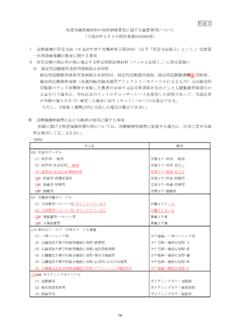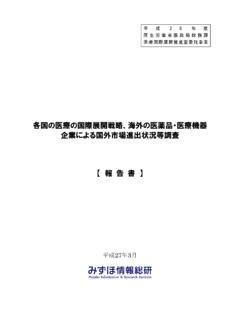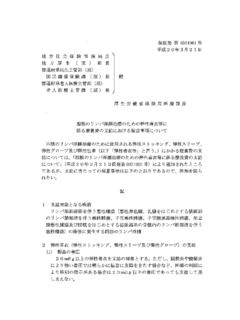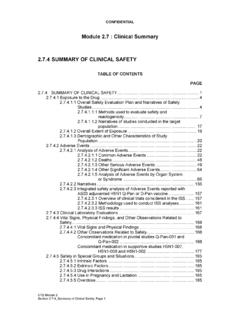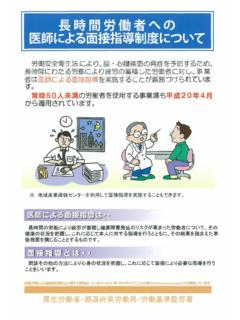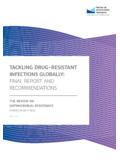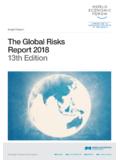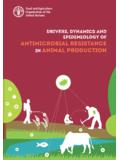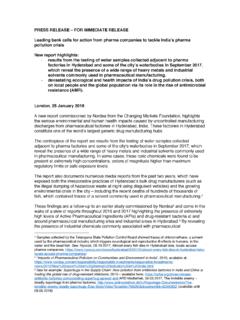Transcription of National Action Plan on Antimicrobial Resistance (AMR)
1 National Action Plan on Antimicrobial Resistance (AMR) 2016-2020 April 5, 2016 The Government of Japan National Action Plan on Antimicrobial Resistance (AMR) (2016-2020) | 2 CONTENTS Contents .. 2 Introduction .. 4 Abbreviations .. 6 The Current State and Challenges of Antimicrobial Resistance in Japan .. 7 The Current State of Antimicrobial Resistance in Japan .. 7 Efforts to Tackle Antimicrobial Resistance in Japan ..10 Direction of Future Measures against Antimicrobial Resistance (AMR) ..11 National Action Plan on Antimicrobial Resistance (AMR) (2016-2020) ..12 Objectives.
2 12 Framework ..12 Goal 1 Improve Public Awareness and Understanding, and Promote Education and Training of Professionals ..14 Strategy Promote Public Awareness-raising Activities to Improve Public Knowledge and Understanding of AMR ..15 Strategy Promote Education and Training on AMR of Professionals Involved in Related Fields ..18 Goal 2 Continuously Monitor Antimicrobial Resistance and Use of Antimicrobials, and Appropriately Understand the Signs of Change and Spread of Antimicrobial Resistance ..22 Strategy Strengthen the Surveillance of Antimicrobial Resistance in Healthcare and Nursing Care.
3 23 Strategy Monitor the Trend of the Antimicrobial Use at Medical Institutions ..26 Strategy Strengthen Surveillance and Monitoring in the Fields of Veterinary Medicine, Livestock Production and Aquaculture ..28 Strategy Standardize Methods of Laboratory Testing and Strengthen Testing Functions of Antimicrobial Resistance at Clinical, Commercial and Public Health Laboratories ..30 Strategy Implement Integrated One Health Surveillance Including Humans, Animals, Food, and the Environment ..32 Goal 3 Prevent the Spread of Antimicrobial -resistant Organisms by Implementing Appropriate Infection Prevention and Control.
4 34 Strategy Infection Prevention and Control in Healthcare and Nursing Care and Promotion of Regional Cooperation ..35 Strategy Promote Infection Prevention and Control in Livestock Production, Aquaculture, Veterinary Medicine and Food Chain ..37 Strategy Strengthen the Outbreak Response Capacity against Antimicrobial -resistant Infections ..39 Goal 4 Promote Appropriate Use of Antimicrobials in the Fields of Healthcare, Livestock Production and Aquaculture ..41 Strategy Promote Antimicrobial Stewardship at Medical Institutions ..42 Strategy Ensure Prudent Use of Antibiotics for Animals in the Field of Livestock Production, Aquaculture and Veterinary Medicine.
5 45 Goal 5 Promote Research on Antimicrobial Resistance and Foster Research and Development to Secure the Means to Prevent, Diagnose and Treat the Antimicrobial -resistant Infections ..48 National Action Plan on Antimicrobial Resistance (AMR) (2016-2020) | 3 Strategy Promote Research to Elucidate the Mechanism of the Emergence and Transmission of Antimicrobial Resistance and its Socioeconomic Impact ..49 Strategy Promote Research on Public Awareness/Education on Antimicrobial Resistance , Infection Prevention and Control, and Antimicrobial Stewardship ..51 Strategy Promote clinical Research on the Optimization of Existing Methods for Prevention, Diagnosis and Treatment of Infectious Diseases.
6 53 Strategy Promote Research and Development of Novel Methods for Prevention, Diagnosis and Treatment and Promote the Cooperation of Industry, Academia and Government ..55 Strategy Promote Global Research Collaboration on AMR and Research and Development of Novel Methods for Prevention, Diagnosis and Treatment of Antimicrobial -resistant Goal 6 Enhance Global Multidisciplinary Countermeasures against Antimicrobial Resistance ..60 Strategy Strengthen Japan s Leadership for Global Policies on Antimicrobial Resistance ..61 Strategy Promote International Cooperation to Achieve the Global Action Plan on Antimicrobial Resistance .
7 63 Outcome Indices for the Action Plan ..65 Monitoring and Evaluation of Progress ..66 Reference ..67 Glossary ..67 Members for Formulating the Action Plan ..69 National Action Plan on Antimicrobial Resistance (AMR) (2016-2020) | 4 INTRODUCTION The challenges of Antimicrobial Resistance (AMR), including Resistance to natural and synthetic antibiotics, have a long history that dates back to the development of penicillin. In Alexander Fleming s speech accepting the 1945 Nobel Prize in Physiology or Medicine for his discovery of penicillin in 1928, he said: The time may come when penicillin can be bought by anyone in the shops.
8 Then there is the danger that the ignorant man may easily underdose himself and by exposing his microbes to non-lethal quantities of the drug make them resistant. In fact, an enzyme which inactivates penicillin named penicillinase had been discovered from penicillin-resistant bacteria in 1940, five years before the speech was given. True to Fleming s prediction, the post-war history of the rapid development of antibiotics can be described as the history of warfare waged against Antimicrobial Resistance (AMR). In the 1960s, as effective antibiotics against penicillin-resistant bacteria were developed one after another, including methicillin for Staphylococcus aureus, and aminopenicillin (ampicillin) and aminoglycosides (gentamicin) for Gram-negative bacteria, people gradually began to believe that bacterial infections could be defeated.
9 With powerful weapons to fight against infectious diseases, such as vaccines and antibiotics, the leading cause of death in developed countries has shifted from infectious diseases to non-communicable diseases (NCDs), and so did the pharmaceutical trends. The development of new antimicrobials has steadily declined since the 1980s. Meanwhile, the threat by new Antimicrobial -resistant bacteria began to rise predominantly in hospital settings. It was the emergence of healthcare-associated infections (HAIs) associated with surgery and medical devices developed through the advancement of medical technologies.
10 These healthcare-associated infections spread also in Japan, caused by Antimicrobial -resistant Gram-positive cocci including Methicillin-resistant Staphylococcus aureus (MRSA), Vancomycin-resistant Enterococci (VRE), followed by Antimicrobial -resistant Gram-negative bacilli including multidrug-resistant Pseudomonas aeruginosa (MDRP) and multidrug-resistant Acinetobacter spp. (MDRA). It remains as a significant problem in medical institutions to the present day. While initially associated with medical institutions, this growing problem is now increasingly found outside the healthcare settings, called community-acquired Antimicrobial -resistant infections.
